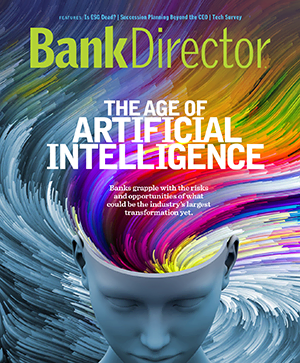In a new survey on how consumers perceive and use bank branches, Rivel Banking Research has found targeted, scalable improvements can drive measurable returns without requiring massive investment. Notably, 59% of consumers say branch design is a deciding factor in choosing a financial institution, underscoring a direct tie between physical presence and market share.
Branch Design Is a Strategic Differentiator
Your branch is more than a service location- it’s a reflection of your institution’s reputation. Consumers notice when your space is modern and welcoming, influencing more than perception but also acquisition and retention. With 77% of consumers saying a relaxed atmosphere boosts confidence and 73% linking cleanliness to professionalism, even modest upgrades such as neutral paint, warm lighting, well-placed signage and local art can yield dividends in customer trust and wallet share. Start by evaluating your branch’s first impression. Is the entrance open and uncluttered? Simple things like changing the layout from time to time, moving furniture and signage also keep the space feeling fresh and innovative.
Through consistent measurement and experience tracking, you can create a powerful feedback loop, ensuring that your design investments correlate with stronger satisfaction scores, higher cross-sell rates and reduced attrition. When you understand how consumers see your brand compared to competitors, you can pinpoint the specific elements driving consideration higher. A modern branch not only looks good and satisfies customers, but it also strengthens your competitive position for new business.
Digital and Self Service Should Complement, Not Compete
Although 95% of transactions at major institutions such as Bank of America are digital, branches still drive the most profitable relationships. Our research shows that while digital channels are preferred for simple tasks, customers still seek human guidance for complex, high-value decisions such as mortgages or business loans. Millennials, for example, prefer kiosks for routine tasks more regularly than any other group. Banks that blend digital convenience with in-person expertise reduce friction and increase conversion.
Return on investment comes from both efficiency and loyalty. For instance, optimizing your interactive teller machine and automated teller machine (ITM/ATM) placement can lower staffing costs while queue systems shorten wait times. Digital displays in the branch open new cross-selling channels. Measuring the return on technology adoption should focus on brand awareness, ensuring that technology builds brand trust rather than becoming a sunk cost. When customers feel your self-service options are more intuitive than competitors’, your brand can build on that positive word-of-mouth.
People Remain Your Strongest Brand Ambassadors
Eighty percent of Gen Z and Millennials prefer human interaction when something goes wrong, according to our recent focus group results. Staff who are empathetic and knowledgeable can turn routine service into long-term loyalty. Investing in employee training in things like identifying potential opportunities to help the customer, and tools like artificial intelligence-driven knowledge systems, drives measurable returns through higher net promoter scores (NPS), stronger retention and improved sales productivity.
Monitoring how customers describe interactions, using words like friendly, helpful and trustworthy, quantifies whether employees are delivering on your brand promise and creating advocacy that grows market share. Empathetic, well-trained staff are the ultimate competitive advantage, creating a human connection that digital-only competitors can never replicate.
The Leadership Imperative
Branch revitalization requires targeted investments linked to ROI — not large budgets. CEOs must align branch design, digital strategy and staffing to foster trust, retain customers and drive growth. The challenge is not simply keeping pace with evolving consumer expectations but leading your team to anticipate them.
The institutions that will define the next decade are those willing to view their branch network as a living, breathing asset. It is an ecosystem that continually adapts to customer behavior, community needs and technological advances. Every design refresh, every technology investment and every staff training program is a signal to the market about your bank’s priorities.
As demographic shifts accelerate and competitors blur the lines between digital and physical engagement, bank leaders have an opportunity to position their banks as trusted anchors in a changing landscape. The ultimate competitive advantage will not come from reacting to disruption but from shaping the customer experience of the future with clarity, foresight and purpose. Ensuring that the branch is somewhere that customers want to visit and get the guidance they desire is a good starting place.




